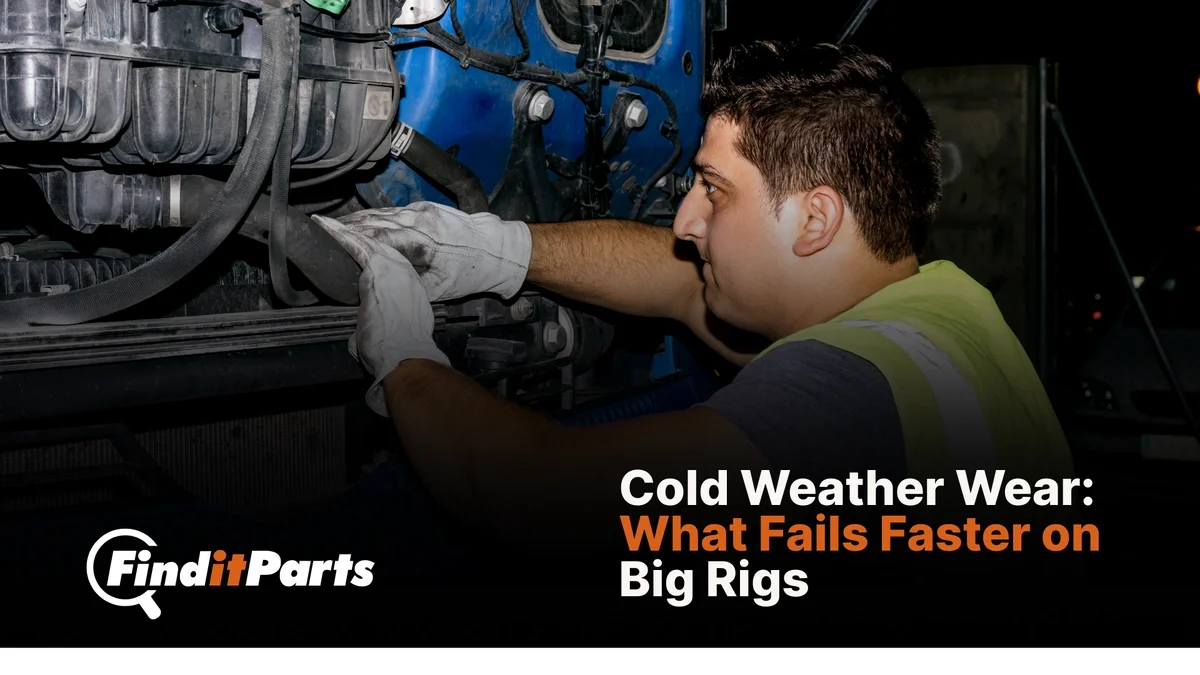Need help? We're here!
(888) 312-8812 Login SignupProduct Focus: Cole Hersee 24452-BX Forward Reverse Relay
September 21, 2020

The forward reverse relay, or simply known as the reversing relay, is just one of the many electronic relays found in modern trucks, but it's just as important as each one. From ensuring proper ventilation to keeping winches running smoothly, these relays play a critical role, so these must be maintained or replaced when broken as soon as possible. Luckily, the Cole Hersee 24452-BX Forward Reverse Relay makes for a perfect replacement. Compatible with almost all heavy duty and commercial vehicles on the road, Cole Hersee forward reverse relays promise reliable, long-lasting performance in tough conditions both on and off the road.
In this guide, we take an in-depth look at the Cole Hersee forward reverse relay and why it could be the right part for your ride.
The Cole Hersee Brand
When it comes to relays and switches, few brands have more expertise than Cole Hersee. Founded in 1924, Cole Hersee is one of the world's leading manufacturers of heavy duty electrical switches, relays, connectors, and other related components for various vehicle types. From general purpose relays to marine ignition switches, Cole Hersee offers a broad portfolio of electrical products for many applications, including construction, off-road, agriculture, forestry, mining, and emergency response sectors. The brand was acquired in 2010 by Littelfuse, a U.S.-based electronic components manufacturer, and has expanded into being the preferred supplier to truck fleets and OEM parts manufacturers worldwide.
What is a Forward Reverse Relay?
As its name suggests, the forward reverse relay can make the direction of an electric motor move forward or in reverse. The relay module is connected to the motor through a control circuit, which is energized by a pulse from a control switch to power the motor to the desired direction.
Cole Hersee relays also support dynamic braking, which immediately shuts off the motor when the switch is turned off. This makes the forward reverse relay a common sight in tarp or lift applications as it makes lifting or lowering simpler in more reliable. These relays are also used in hoists, hatches, winches, snowplows, intake and exhaust fans, vehicle outriggers, and other applications that require forward or reverse functions.
Why Choose Cole Hersee?
In addition to its basic forward and reverse functions, the Cole Hersee 24452 forward reverse relays also come with additional features. Unlike other similar relays in the market, the Cole Hersee forward reverse relay is completely sealed with high-strength epoxy to IP67 specifications, making it water-resistant and capable of withstanding harsh operating environments. It also has a low-profile design that saves a lot of space, especially in cramped spaces. Other features include high-performance silver-plated contacts, tin-plated brass studs and hardware, and continuous operation support.
Other Factors to Consider
Solenoid vs. relay
One common frustration when searching for relays online is that you'll encounter relays described as solenoids and vice versa. These two terms are actually interchangeable and refer to a specific type of remote switch. The word 'solenoid' technically refers to the helical windings found in electric motors that generate the magnetic force that pulls the plunger in the core. But in an automotive context, the 'solenoid' typically refers to a "metal can" type of switch while 'relay' refers to all other such devices, including smaller microrelays. Regardless of what they are called, these products are offered by Cole Hersee to meet your specific needs.
Intermittent Duty vs. Continuous Duty
Cole Hersee relays are rated either as Intermittent Duty or Continuous Duty. Intermittent duty relays are rated with maximum ON times and minimum OFF times. These are usually acceptable in many applications, but once those ratings exceeded, the coil windings are at the risk of burning out. This is why it isn't recommended for Intermittent Duty relays to be used in continuous services. In such cases, you will need a Continuous Duty relay. While they are usually more expensive, these relays are more durable and safe for long-term continuous use. Be sure to check if the forward reverse relay you're getting is rated according to your needs.
Solid state vs. electromechanical
You may have also heard Cole Hersee relays being described in the catalog as "solid state" and electromechanical. These refer to how the relay is configured, with each one having its own distinct strengths and weaknesses.
Solid-state relays, like those of Cole Hersee forward reverse relays and microrelays, do not contain any moving component. The lack of moving components eliminates heat and friction, which are common causes of wear. This is also the reason why these relays offer a longer service life than those with mechanical components. These types of switches require less energy to maintain, resulting in a higher power gain, and are much faster at switching than other types of relays.
Electromechanical relays, on the other hand, have an electromagnetic coil with a movable contact or armature. When the coil receives the current, it generates a magnetic field with attracts the armature. When the coil loses power, the magnetic field disappears, and the spring retracts the armature. Because of their mechanical nature, these types of relays tend to have a shorter lifespan, but they can handle a larger amount of current than their solid-state counterparts. Also, electromechanical relays are more flexible, capable of being used with AC and DC currents depending on the application and design.
Bi-stable/latching functionality
Other terms you may have encountered while shopping for relays is bi-stable and latching. These terms refer to the same action, wherein the bi-stable relay is at rest in either the on or off position through mechanical or magnetic latching. In this configuration, the plunger in the relay is latched to the On position. And in the second actuation, the plunger is latched Off.
The advantage of Cole Hersee's bi-stable relays is that, unlike standard solenoids/relays that need to maintain a control current to keep the plunger in the On position, the control current is only applied to changing the states of Off and On. This keeps the flow of current to a minimum and, in turn, generates less heat.



